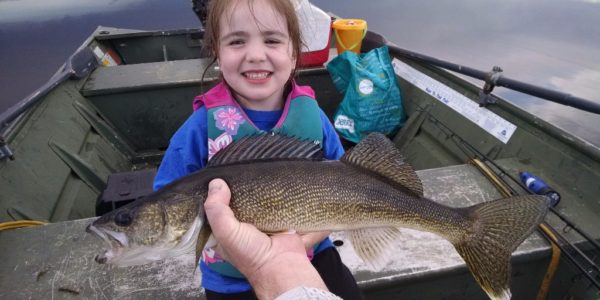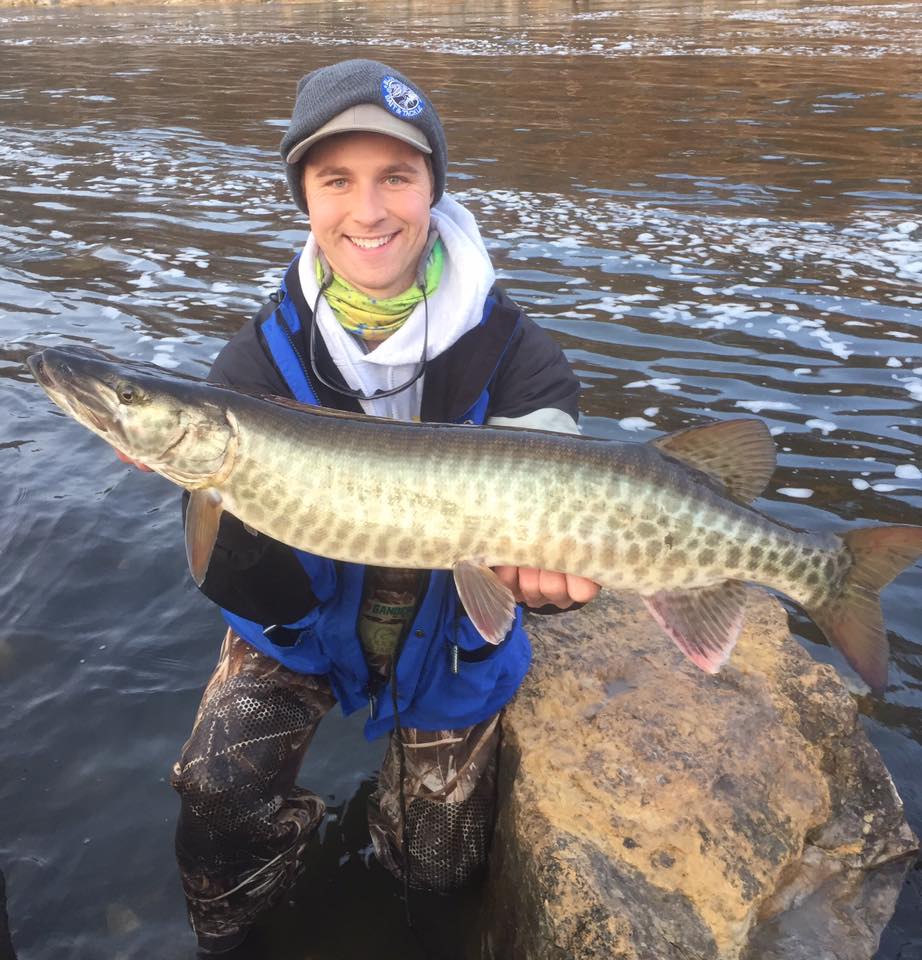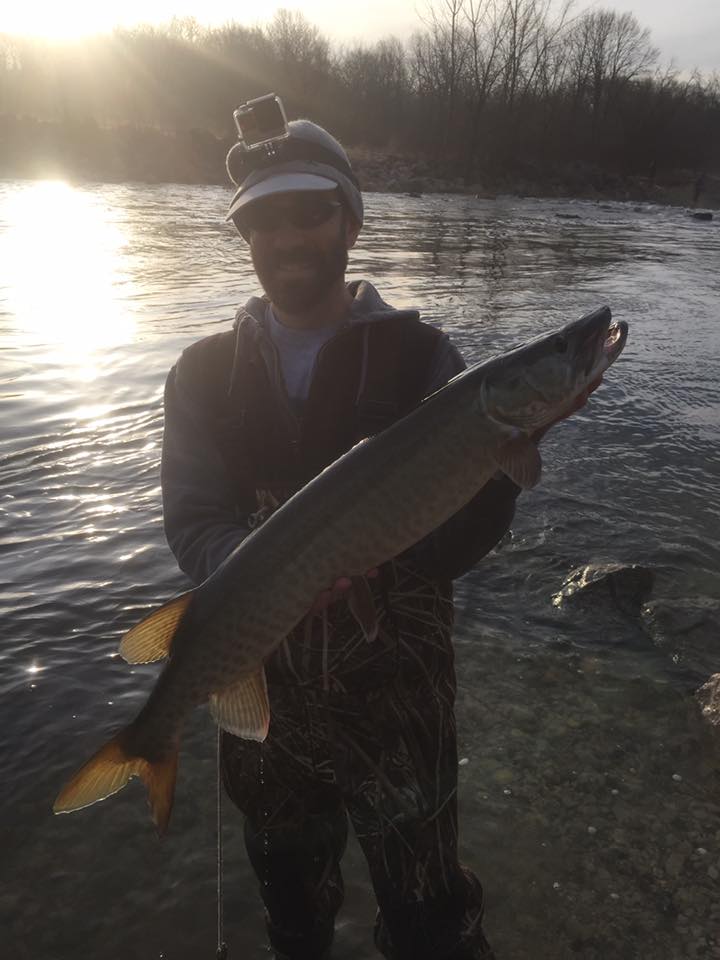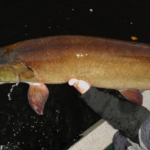Spring has come early to WI and MN. Low snow fall amounts this winter made for little run off when warm weather came. Isolated rain fall has made some lakes and rivers across both states very high while other regions have remained very dry. Weather has been mostly warm and seasonable, but not overly warm; which has caused water temperatures to plateau.
Therefore, migrations and reproduction of fish that rely on rising water levels, rising water temperatures, and/or water over 60 F have not really occurred yet. For instance, in many waters bluegills and crappies have migrated into the shallows, and for the most part have not been chased out by cold water. They are feeding and waiting to spawn, but the water is too cool yet so they are just hanging around in the shallows waiting and eating. This is of course fantastic for fishing, and panfish action has been excellent. I look for warm sunny calm afternoons to bump the water up a few degrees before the cool down of night hits.

Xander Teske used the durable high action micro plastics from panfishplastics.com to catch over 100 crappies on just 2 curly tail grubs!
These small warming trends draw in additional panfish (often bigger ones too) and increase their activity levels. By early May on warmer waters (often those to the southern end of WI and MN), panfish (especially crappies) will likely be about to spawn or have started spawning already. Crappies spawn in the low 60’s F, bluegills closer to or at 70 F.
As of May 1st, WI and MN walleyes will have mostly spawned due to warmer water temperatures this year, though there may still be a few stragglers to the far north. Some waters have an open season for walleyes all year, but the majority of our walleye waters open this month. The first Saturday of May in WI. The second Saturday of May in MN. Opening day this year should find warmer water temperatures than normal and good walleye feeding activity. Weed growth will also likely be accelerated this spring and a good weed edge walleye bite should never be overlooked. Often, in most peoples minds walleyes get associated with rock structure, but when walleyes move into weed cover, they are looking to predate. My favorite approach is casting #10 Husky Jerks on spinning gear with 10 lb. Nanofil and a 6-8′ 10 lb. fluorocarbon leader. Sometimes I like a gentle pull and pause retrieve, other times 3 sharp twitches and a pause works best. I experiment and let the fish tell me what they want. I work my boat and cast to weed edges as depicted in the illustration directly below.
Of course, other hard minnow baits, swim jigs/soft plastics, and various live minnow presentations also work well. Individual ecosystems really dictate the most effective presentations for walleyes because each has a unique forage base. For instance, in some waters leeches seem to be the magic ticket. In the stocked walleye waters near my home in the west metro, walleyes are heavily targeting golden shiners and young panfish on the milfoil edges. Large minnow imitators are usually most successful and stubborn walleye anglers often wonder why the bass fishermen usually catch more walleyes than they do.
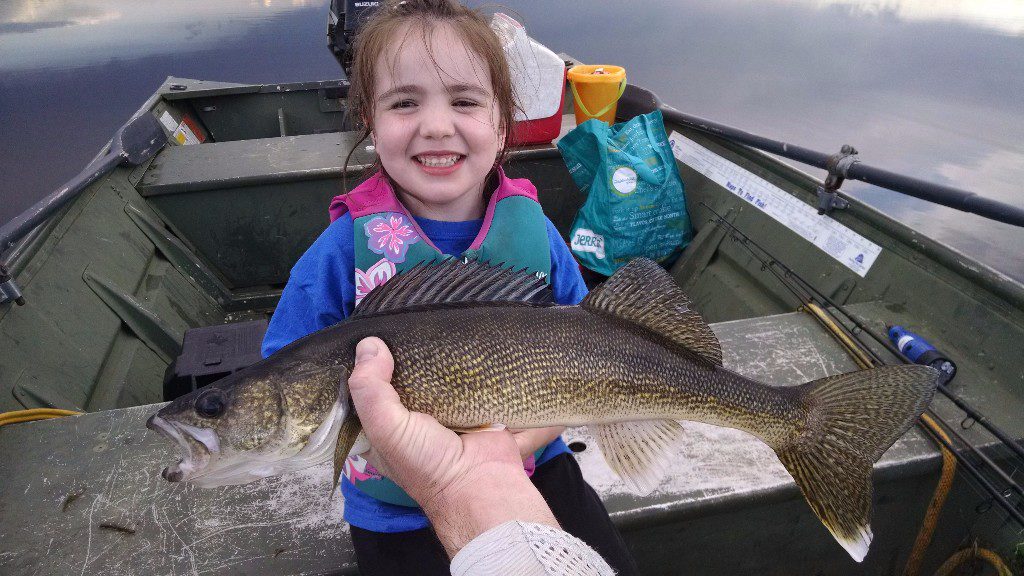
Good times with my daughter Samantha and spring walleyes on a local lake.
Depending on lattitude, water temperature, and individual environment; large northern pike might still be up shallow or may have moved deep or near cold water inlets (wherever they can find cooler water). Smaller pike can be found in the shallow weeds all year, but any pike over 8 pounds prefers (and searches out) water under 60 F during the warm water season. Waters that don’t have cool water refuge rarely produce pike larger than 10 lbs. To the far north and in cold waters, pike will likely still be up in the shallows around new weed growth taking advantage of the influx of forage. For truly big pike, I like full on musky gear and big lures, but heavy bass stuff will work as well.
In May, largemouth and smallmouth bass begin to make prespawn feeding movements and then begin the spawning process itself. Where legal (check regulations), the prespawn movements provide some of the best trophy opportunities of the year. When water reaches 54-62 F, big egg laden female bass push shallow to stock up on calories prior to the rigors of reproduction. Largemouth often move into the same protected areas they will use to spawn or any other area that also attracts the the smaller fish they are looking to feed on.
Smallmouth on the other hand usually spawn in areas with a harder bottom. These areas are often more exposed to the main lake, but they will usually be more exposed to sunlight (i.e. north shorelines were the water warms faster during the day). If it is known from observation during past years where the smallmouth typically spawn, it is a good bet that on a warm spring day big pre-spawn smallies will be making feeding movements into these same areas. A slightly overlooked option is that smallmouth will often use soft dark bottom (often more protected) areas directly adjacent to known spawning areas to feed, especially if the bottom composition in the outside areas consists mostly of light colored sand and gravel. The lighter colored areas absorb less radiant energy, and therefore warm more slowly and attract less forage. This is an interesting occurrence, because it is one of the few times smallies can be seen going against their typical hard bottom tendencies. This illustrates just how urgent their need to feed can be prior to the spawn. Soft plastics are excellent for both species prespawn, but in my opinion no artificial lure beats the Husky Jerk and the strike producing ability of its pause at neutral buoyancy.
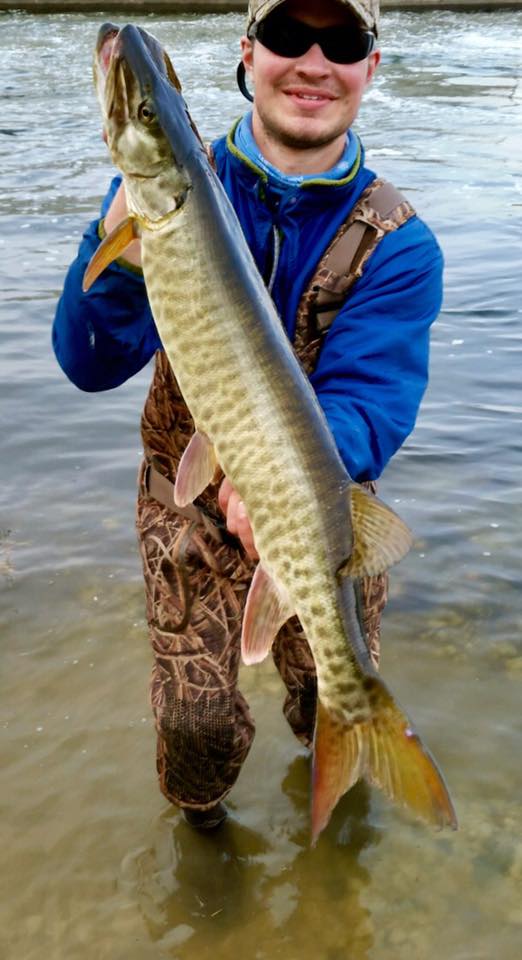 The southern WI musky opener is the first Saturday in May. The northern WI musky opener is Memorial weekend Saturday. The MN musky opener is not until the first Saturday in June. An interesting opener (especially for those in northern and northeastern WI looking to scratch the itch) is the WI/MN boundary waters musky opener on May 15th, which lands on whatever the day of the week it happens to land on.
The southern WI musky opener is the first Saturday in May. The northern WI musky opener is Memorial weekend Saturday. The MN musky opener is not until the first Saturday in June. An interesting opener (especially for those in northern and northeastern WI looking to scratch the itch) is the WI/MN boundary waters musky opener on May 15th, which lands on whatever the day of the week it happens to land on.
In lakes, early season musky action should be good this year as the ice has been off for some time and the water warmer than in most years. Cold early seasons can bring some pretty dismal musky action in lakes. I don’t think there is any magic temperature threshold, rather a warming trend is more important than anything else. A warm day with rising water temperatures is what I look for to get muskies active. The more rapid the increase in water temperature, the better. In rivers, action is usually good regardless of temperature, though warming trends tend to produce better action. Water levels, current speed, and water clarity usually dictate fishing productivity. Water tends to be higher and faster in spring, so as long as the water isn’t a debris filled torrent of brown paint, willing muskies should be able to be located downstream and within a half mile of migratory obstructions such as dams and falls.
As promised in last month’s newsletter, the results from the IA trip a month back. From top to bottom, Matt Gunderman, Jake Francis, and Adam Glickman; each with a clean early spring IA musky.
Stream trout action will also be very much dependent on stream flow and water clarity. May provides some of the best water temperatures of the season for both browns and brookies (usuallly 46-58 F), so as long as the streams aren’t degraded into debris filled chocolate milk, action will be good. Cloudy water can also be excellent, especially for big trout, as long as there is at least 1.5′ of clarity.
For more content, including video from Honesty Musky Television, Honest Musky Guide Service, Seminar Topics and Availability, and more articles; visit: www.honestmusky.com
Adam Glickman is an independent agent who shops across 9 different A rated insurance companies to best meet your MN and WI home, renters, auto, life, boat, and commercial insurance needs. For more information, contact Glickman at 612-750-0546 or at adam@lcisagency.com


